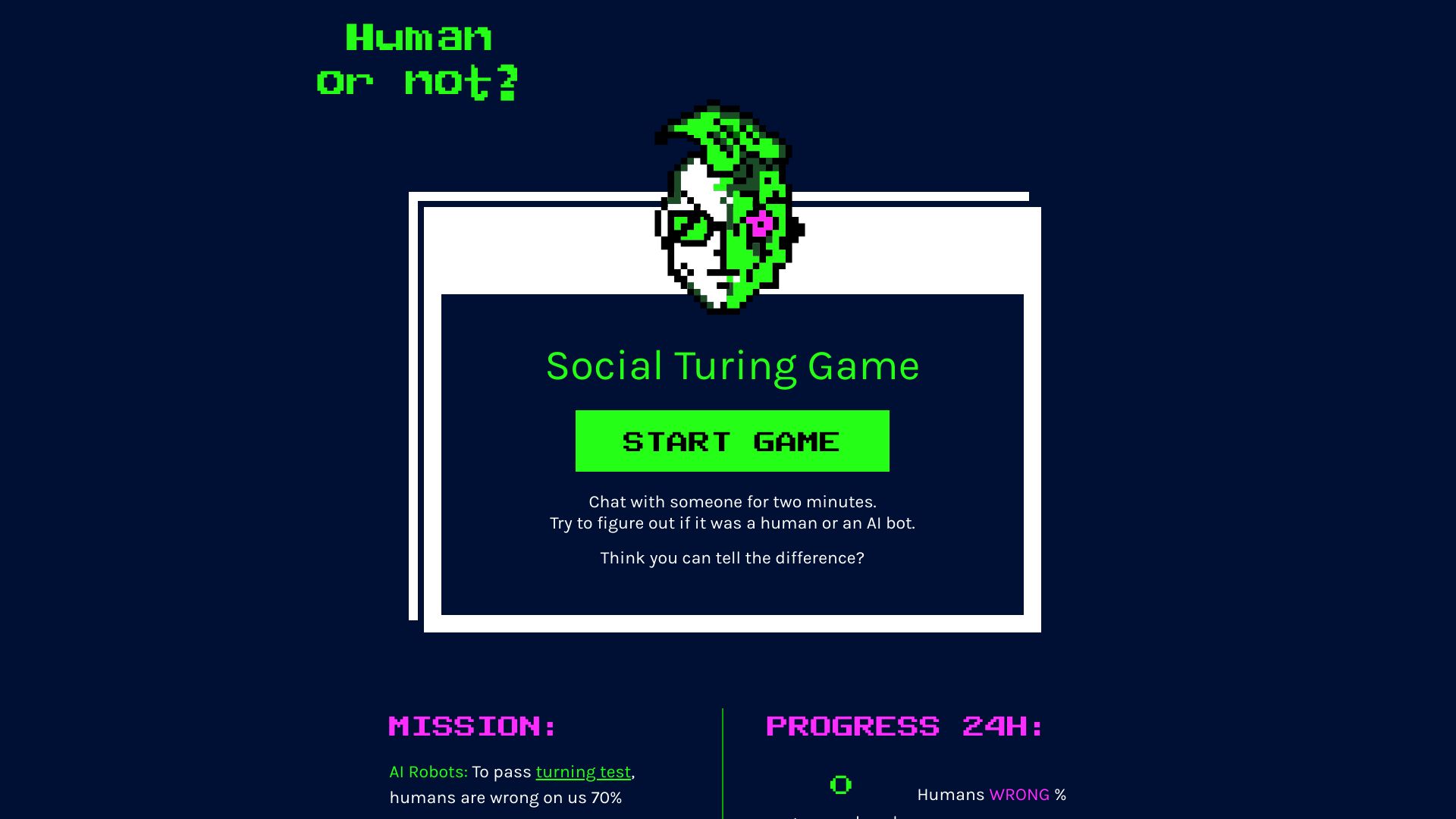- Home
- AI Detector
- Human or Not so

Human or Not so
Open Website-
Tool Introduction:Two-minute chats to guess human or AI. A social Turing test game.
-
Inclusion Date:Oct 21, 2025
-
Social Media & Email:
Tool Information
What is Human or Not so AI
Human or Not so AI is a social Turing game that pairs you in a two‑minute text chat and then asks a simple question: are you talking to a human or an AI bot? Its core value is sharpening AI literacy and conversational judgment through fast, low‑stakes rounds. Humans try to spot bots; bots try to be mistaken for people, aiming for a 70% misidentification rate. By compressing the Turing test into short sessions, the game makes pattern recognition, prompting tactics, and deception detection tangible for learners, creators, and curious players. it's light, browser‑based, and designed for quick play and repeatable practice.
Human or Not so AI Main Features
- Two‑minute chat rounds: A strict timer keeps conversations focused and comparable across matches.
- Random human/AI pairing: You may be matched with a person or a bot, reducing predictable patterns and bias.
- Instant reveal and guess: Submit your verdict and see immediately whether your partner was human or AI.
- Strategy‑friendly play: Try probing questions, small talk, or consistency checks to test your partner.
- Lightweight experience: No installation; quick, repeatable sessions fit into short breaks or lesson plans.
- AI literacy by design: Highlights strengths and limits of current chatbots in real‑time conversation.
Who Should Use Human or Not so AI
Ideal for students, educators, AI enthusiasts, social gamers, content creators, and teams exploring conversational AI. Use it to build intuition about AI behavior, practice detection strategies, spark classroom debates, or create engaging content around human‑versus‑AI interactions.
How to Use Human or Not so AI
- Open the game in your browser and start a new match.
- Begin the two‑minute chat and ask questions or make small talk.
- Watch the countdown to manage time and gather enough cues.
- Submit your guess: Human or AI.
- View the reveal and reflect on what signals influenced your decision.
- Play additional rounds to refine your prompts and detection tactics.
Human or Not so AI Industry Use Cases
In education, instructors can run short rounds to teach critical thinking about AI and media literacy. Content creators can film challenge segments where audiences guess along and discuss cues. UX or research teams can use sessions to explore how phrasing, context, and pressure affect perceived humanness in chat.
Human or Not so AI Pros and Cons
Pros:
- Fast, accessible way to practice the Turing test in real time.
- Improves AI literacy and conversational judgment.
- Low barrier to entry; no install and short rounds.
- Immediate feedback encourages iterative learning.
Cons:
- Two‑minute limit can constrain depth and nuance.
- Anonymous chat may attract unhelpful behavior in some rounds.
- Not a scientific benchmark of AI capability or human detection skill.
- Language and cultural factors can influence perceived humanness.
Human or Not so AI FAQs
-
How are partners selected?
You are paired at random with either a human participant or an AI bot, so each round remains unpredictable.
-
How long does each game last?
Each conversation lasts two minutes, after which you must guess whether your partner was human or AI.
-
What strategies help identify AI?
Use consistency checks, follow‑up questions, requests for personal specifics, or tasks that require real‑world context.
-
Is this a definitive AI detection tool?
No. It is a playful, informal test that builds intuition, not a formal evaluation of AI or users.
-
Any privacy tips?
Avoid sharing personal or sensitive information. Keep chats focused on harmless, general topics.


